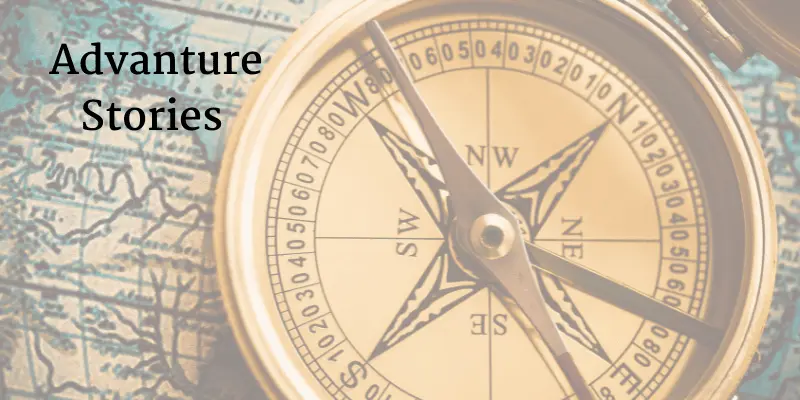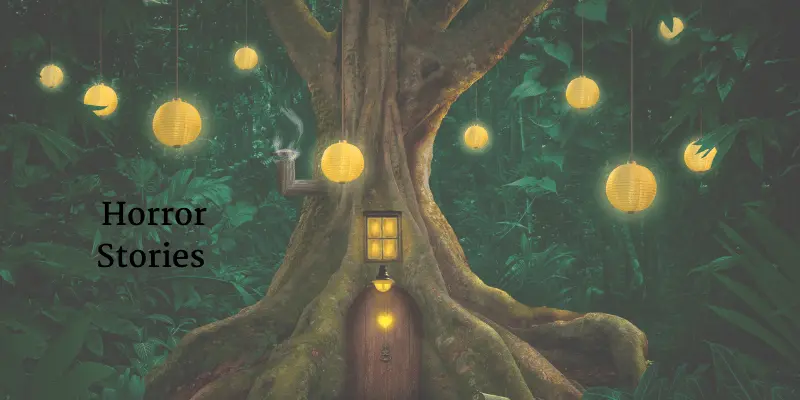Types of Stories – A Journey Through Different Story Forms
Updated: 02 Oct, 2024
656
Let’s explore the different types of stories. Stories are a unique part of our culture for as long as we have been able to communicate.
The stories entertain, educate, and inspire us these are forming an essential part of our lives.
From the books we read to the movies we watch, stories come in all shapes and sizes.
But what are the different types of stories, and how do they work? Let’s dive into the world of stories and explore various types of storytelling.
What Are Stories?
At their core, stories are narratives that take readers or listeners on a journey.
They have a beginning, middle, and end, typically centered around a plot or conflict.
Stories can be fictional or nonfictional (based on real events).
Regardless of the form, every story aims to engage the audience and evoke emotions.
Types of Stories
Let’s explore how many types of stories there are:
Adventure Stories

Adventure stories are packed with excitement. The main character often embarks on a journey filled with obstacles and challenges.
Whether exploring lost worlds or battling foes, these stories keep readers on the edge.
Examples include The Hobbit and Treasure Island.
Mystery Stories
Mystery stories revolve around solving a puzzle or a crime. The plot often includes suspense, hidden clues, and a surprise ending. Detectives or amateur sleuths are usually the main characters, working to solve the case.
Classic examples are Sherlock Holmes and Nancy Drew.
Fantasy Stories
In fantasy stories, magic and mythical creatures rule the world. Set in imaginative universes, these stories transport readers to faraway lands filled with wizards, dragons, and quests.
Examples of the best-known fantasy stories include Harry Potter and The Lord of the Rings.
Science Fiction
Science fiction, or sci-fi, typically takes place in futuristic settings with advanced technology, space travel, and often features aliens.
These stories explore what could happen based on scientific advancements.
Popular examples include Star Wars and The Martian.
Romance Stories
Romance stories focus on relationships, love, and emotional connections between characters.
These types of stories usually explore the ups and downs of romantic relationships, ending with either heartbreak or happily ever after.
Famous examples include Pride and Prejudice and The Notebook.
Horror Stories

Horror stories aim to frighten and thrill their readers. These stories attract a specific kind of people.
These stories involve supernatural elements like ghosts, vampires, or haunted houses, but can also include psychological fears and real-world danger.
Examples include Dracula and The Shining.
Historical Fiction
Historical fiction blends real-world events and periods with fictional characters and narratives. These are the love of history readers.
It allows readers to experience history through the eyes of made-up characters, making history come alive.
Examples include War and Peace and The Book Thief.
Drama Stories
These stories deal with deep emotional themes, usually involving family, love, and personal conflicts.
These stories are typically character-driven, focusing on relationships and real-life struggles.
Classic examples include To Kill a Mockingbird and The Great Gatsby.
Types of Short Stories
Short stories are another form of storytelling. While they follow the same narrative structure, they are brief and focus on a single plot or theme. Some common types of short stories include:
- Flash Fiction (less than 1,000 words)
- Microfiction (as short as a few sentences)
- Vignettes (small, slice-of-life moments)
Short stories are usually used to make a quick, powerful point, like in The Lottery by Shirley Jackson or The Gift of the Magi by O. Henry.
Fiction Types: Narrative Stories and Plot
When talking about stories, it’s essential to understand the plot in a story.
The plot is the sequence of events that make up the narrative. Plots can be simple or complex but generally follow this structure:
- Introduction – Introduces the characters and setting.
- Conflict – Presents the central problem or challenge.
- Climax – The turning point where the conflict peaks.
- Resolution – The conflict is resolved, and the story concludes.
Narrative stories are a type of storytelling that primarily focuses on the plot and the unfolding of events.
They follow a traditional storytelling structure and aim to convey a clear message or moral.
Best Stories of the World
Throughout history, many stories have stood out as timeless classics, shaping the world of stories we know today. Some of the world’s best stories include:
- The Odyssey by Homer (Epic Adventure)
- One Hundred Years of Solitude by Gabriel García Márquez (Magical Realism)
- The Great Gatsby by F. Scott Fitzgerald (Drama)
- 1984 by George Orwell (Dystopian Fiction)
These stories have not only captivated readers but have also influenced culture and storytelling worldwide.
Conclusion: The World of Stories
Stories come in all forms, from types of storybooks to narrative stories, and they serve as windows to other worlds.
Whether you prefer the excitement of adventure, the suspense of mystery, or the magic of fantasy, the world’s best stories offer something for everyone.
Dive into the world of stories, explore different genres, and discover the type of storytelling that resonates most with you!
FAQs
What are short stories?
Short stories are brief narratives focusing on a single plot, theme, or message. They typically have fewer characters and a concise structure, making them impactful and easy to read. Examples of famous short stories include The Lottery by Shirley Jackson and The Gift of the Magi by O. Henry.
What are the different types of short stories?
Short stories can be categorized into various types based on their length and style. Flash fiction is under 1,000 words, microfiction can be just a few sentences long, and vignettes capture small, slice-of-life moments. Each type is designed to deliver a strong impact in a limited space.
What is a plot in storytelling?
A plot is the sequence of events that shape a story from beginning to end. It generally includes an introduction, conflict, climax, and resolution. A well-structured plot keeps the reader engaged and ensures the story flows logically.
Why is conflict important in a story?
Conflict is the driving force behind a narrative because it creates tension and engages the reader. It presents a problem or challenge the characters must overcome, making the story compelling. Without conflict, a story may feel flat and uninteresting.
What is the difference between a narrative story and a short story?
A narrative story focuses on the plot and events unfolding, often following a traditional storytelling structure. A short story, while also a narrative, is more concise and aims to deliver a quick yet impactful message. Both types serve the purpose of engaging and entertaining the reader.
What are some of the best stories in the world?
Some of the most influential stories include The Odyssey by Homer, One Hundred Years of Solitude by Gabriel García Márquez, The Great Gatsby by F. Scott Fitzgerald, and 1984 by George Orwell. These classics have shaped literature and storytelling across generations.
What are the key elements of a great story?
A great story typically includes strong characters, an engaging plot, a clear theme, and emotional depth. It should also evoke feelings and thoughts that resonate with the reader. A well-crafted story leaves a lasting impact and can be remembered for years.
How do different genres of storytelling appeal to readers?
Different genres cater to readers’ interests, such as adventure for excitement, mystery for suspense, and fantasy for imagination. Each genre has unique storytelling techniques that enhance the experience. Readers often gravitate towards genres that align with their emotions and curiosity.
How do stories influence culture and society?
Stories reflect cultural values, traditions, and beliefs, shaping how people view the world. They inspire change, preserve history, and connect individuals across different backgrounds. Classic stories often have a lasting impact, influencing literature, art, and even politics.
Why should we explore different types of storytelling?
Exploring different storytelling styles allows readers to experience new perspectives and emotions. It enhances creativity, improves critical thinking, and broadens one’s world understanding. Whether through books, films, or oral traditions, diverse storytelling enriches our knowledge and imagination.
Bonus Information on Storytelling and Stories
- Oldest Known Story – The Epic of Gilgamesh is one of the oldest known stories, dating back over 4,000 years. It originated in ancient Mesopotamia and explores themes of friendship, mortality, and heroism.
- Why We Love Stories – The human brain is wired for storytelling. Neuroscientists have found that stories activate multiple areas of the brain, making them more memorable than facts alone.
- The Role of Folktales – Traditional folktales has been passed down through generations, teaching moral lessons and preserving cultural heritage. Many well-known fairy tales, like Cinderella and Little Red Riding Hood, originated as folk stories.
- Flash Fiction’s Growing Popularity – Flash fiction and microfiction have become popular due to their brevity and impact in today’s fast-paced world. Writers often use platforms like Twitter to share ultra-short stories.
- The Influence of Myths and Legends—Many modern stories draw inspiration from ancient myths and legends. Works like Rick Riordan’s Percy Jackson & The Olympians and J.R.R. Tolkien’s The Lord of the Rings incorporate mythological themes.
- Storytelling in Marketing – Brands use storytelling to create emotional connections with customers. Advertisements that tell a compelling story are more likely to be remembered and shared.
- The Power of First-Person Narratives—First-person storytelling allows readers to experience events through the protagonist’s eyes, making the narrative more personal and immersive. This technique is commonly used in memoirs and psychological thrillers.
- Adaptations of Classic Stories—Many classic stories have been adapted into movies, TV series, and even video games. George Orwell’s 1984 has inspired numerous films and dystopian fiction works.
- How Stories Shape Identity – Personal narratives help people define their identity and make sense of their past experiences. Psychologists often use storytelling as a therapeutic tool to help individuals process emotions.
- The Digital Age of Storytelling – With advancements in technology, storytelling has evolved beyond books and films. Interactive storytelling in video games and virtual reality experiences allows users to become part of the story.
Please Write Your Comments